Middle East, also called the Near East, is a region made up of the lands of southwestern Asia and northeastern Africa. All definitions of the region include the countries of Bahrain, Egypt, Iran, Iraq, Israel, Jordan, Kuwait, Lebanon, Oman, Qatar, Saudi Arabia, Syria, Turkey, the United Arab Emirates, and Yemen. The definitions also include the West Bank and the Gaza Strip, which, along with Israel, make up the historic region of Palestine. In this article, the term Middle East refers to these 15 countries and 2 territories. They cover about 2,812,000 square miles (7,283,000 square kilometers) and together have about 461 million people.

Some definitions of the Middle East include more countries. Afghanistan, Algeria, Cyprus, Libya, Morocco, Pakistan, Sudan, and Tunisia are the countries most often added.
People
Identity and language.
Modern Middle Eastern cultures are the product of the region’s many past civilizations, as well as outside influences that came through trade, migration, and conquest. Until the late 1800’s, people identified themselves in terms of religion, family relationships, place of origin, and occupation. Since then, national and ethnic identities based mainly on language and religion have become more important.
More than three-fourths of the people of the Middle East identify themselves as Arabs. They share a common language, Arabic. Written Arabic and most of the Arabic heard on radio and television are the same throughout the region. But the everyday spoken language differs from country to country. Two other major Middle Eastern languages are Persian, spoken in Iran, and Turkish, spoken in Turkey. These languages are important bases of Iranian and Turkish national identity. Jews make up the majority in Israel, and Hebrew is the national language there. The Kurds, who have a distinct language and identity, live in parts of Iran, Iraq, Syria, and Turkey. 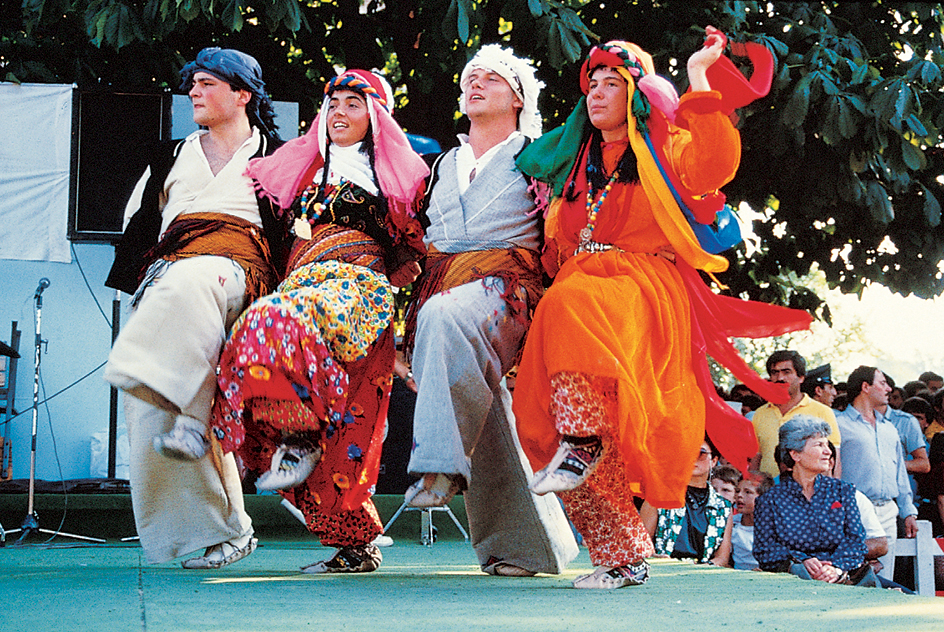
Way of life.
For thousands of years, most Middle Easterners were peasant farmers living in villages. Small numbers of nomads—that is, herders who moved with the seasons to find pastures for their flocks—raised livestock in areas unsuitable for farming. Cities and towns were centers of trade and manufacturing, government and administration, and learning. Some cities were important religious centers. Nomads, peasants, and city dwellers depended on one another economically, and they exchanged goods and services in local markets. 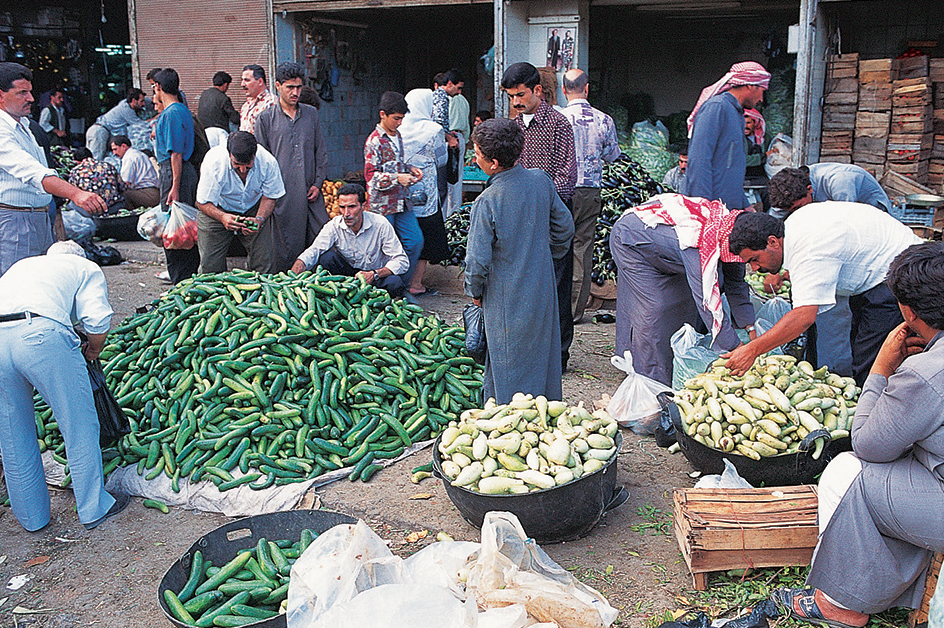
After 1800, life began to change. The population grew rapidly. Cities became much larger as a result of stronger government, increased trade with industrial Europe, and the development of oil production. Today, about three-fifths of all Middle Easterners live in cities.
The average person in Israel and in several oil-producing Middle Eastern countries has a high income, comparable to that of a European. But most people elsewhere in the region have far lower incomes.
Many rural villages have electric power, and television antennas and satellite dishes stand on many village rooftops. But most rural residents are poorer than city dwellers, and fewer of them can read. City dwellers more often have clean drinking water and sanitation. They have more access to health services, and their children are more likely to attend school. 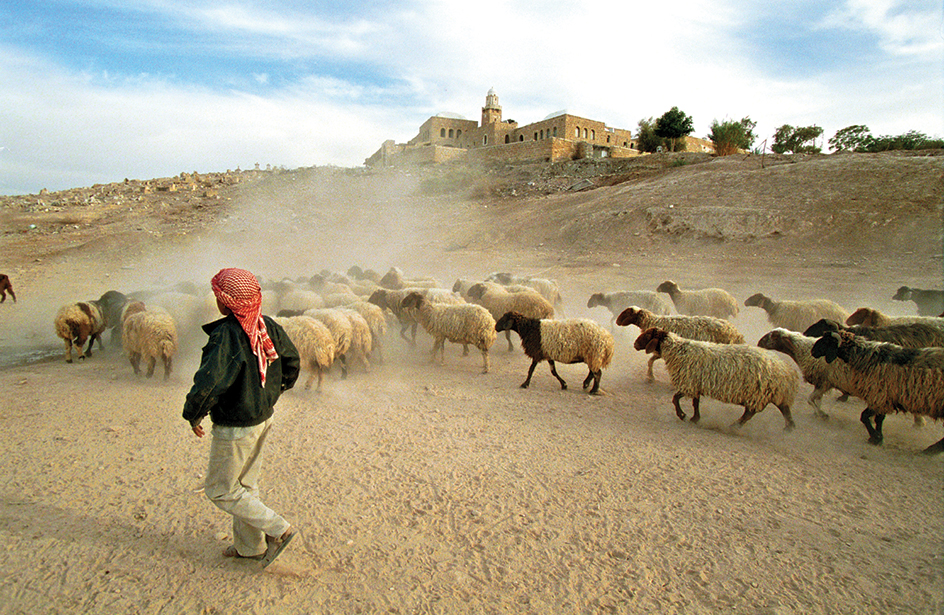
Since the early 1900’s, education has become more widely available in the Middle East. More boys than girls attend school and learn to read.
Women’s lives, like men’s, have changed since the 1800’s. Then, as now, rural women did farm work and raised poultry and livestock, in addition to caring for children and doing housework. Most city women also worked. But in the 1800’s, most wealthy families kept women secluded inside the home—a sign of upper-class status. The practice of secluding women disappeared in the early 1900’s. Today, women attend universities and hold jobs in business, medicine, education, government, and other areas. Despite these gains, many women are still working to expand their legal rights.
Middle Easterners are family-oriented, and most marry and have children. But younger people marry at a later age and have fewer children than their parents and grandparents did.
Religious law governs family life in every Middle Eastern country except Turkey. In Saudi Arabia, women are required to wear a veil in public that covers their faces. In Iran, women must cover their heads. In other countries, women can choose whether to wear a veil or head cover.
Religion.
More than 90 percent of Middle Easterners, including most Arabs, Iranians, and Turks, are Muslims. Their religion, Islam, is based on the revelations received by the Prophet Muhammad in the A.D. 600’s. Muslims believe these revelations came directly from God (Allah in Arabic). Most Muslims belong to the Sunni branch of Islam. A minority belong to the Shī`ah branch and are called Shī`ites. These two branches originated in a dispute over who should lead the Muslims after the death of Muhammad in 632. Countries in which Shī`ites make up the majority of Muslims include Iran, Iraq, and Lebanon. Sunnis are generally the majority elsewhere. 
Four-fifths of Israel’s citizens are Jews. The religion of the Jews, called Judaism, comes from the ancient Hebrews, who were the first people to adhere to monotheism (belief in only one God). About 20 percent of Israel’s Jews strictly observe the principles of Judaism and are called Orthodox Jews. About half observe only some of the principles, and the rest do not observe them at all. There are small Jewish communities in Iran and Turkey.
Christianity—the religion based on the life and teachings of Jesus—originated in the Middle East. Christians live in every country in the region outside the Arabian Peninsula. Some Christian churches are “national” churches, in the sense that their members identify themselves as belonging to one nation. The main ones are the Coptic Church, in Egypt; the Armenian Church; and Lebanon’s Maronite Church, a Catholic denomination. Most Syrian and Palestinian Christians and some Lebanese Christians belong to the Greek Orthodox Church. Smaller churches include the Syrian and Assyrian Orthodox churches, and several Catholic and Protestant churches.
Another monotheistic religion, the Bahá’í Faith, was founded on the teachings of Baha’u’llah in present-day Iran and Iraq in the 1800’s.
The land
In the northern part of the Middle East, mountains border interior plateaus. The Pontic Mountains and the Taurus Mountains rise in Turkey, and the Elburz and Zagros mountains extend across Iran.
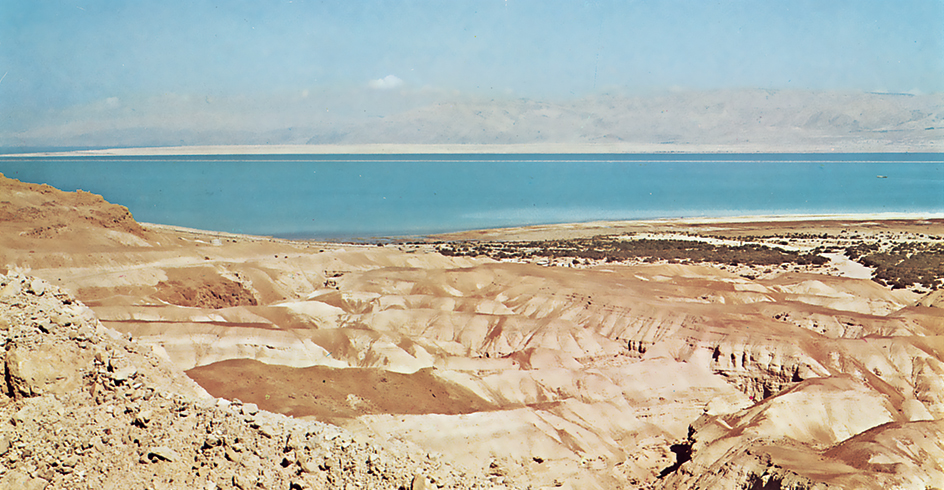
The southern part of the Middle East is a vast dry plateau. Several large deserts lie in this area. The Western and Eastern deserts of Egypt are part of the Sahara. The Rub al Khali (Empty Quarter), a vast expanse of sand dunes, stretches across southern Saudi Arabia.
The Middle East has two major river systems—the Tigris-Euphrates and the Nile. The Tigris and Euphrates begin in Turkey and flow though Syria and Iraq. In Iraq, the rivers meet and form the Shatt al Arab, which empties into the Persian Gulf (commonly known as the Arabian Gulf in Arab countries). The Nile flows north through Sudan and Egypt to the Mediterranean Sea.
Economy
In the early 1900’s, huge petroleum deposits were discovered in the Persian Gulf region. Since the 1940’s, oil revenues have transformed many once-poor societies. Agriculture is a major source of income in many Middle Eastern countries. Tourism is also important, especially in Egypt, Israel, and Turkey. Industry and commerce generate much income for Israel and Turkey. Lebanon and Bahrain have important banking industries. Many workers from Egypt, Turkey, Yemen, and the Palestinian territories find jobs in other countries and send part of their earnings home. Foreign aid has allowed such countries as Israel, Egypt, Jordan, and Syria to spend large sums on the military. The Suez Canal in Egypt is a major waterway for international shipping. 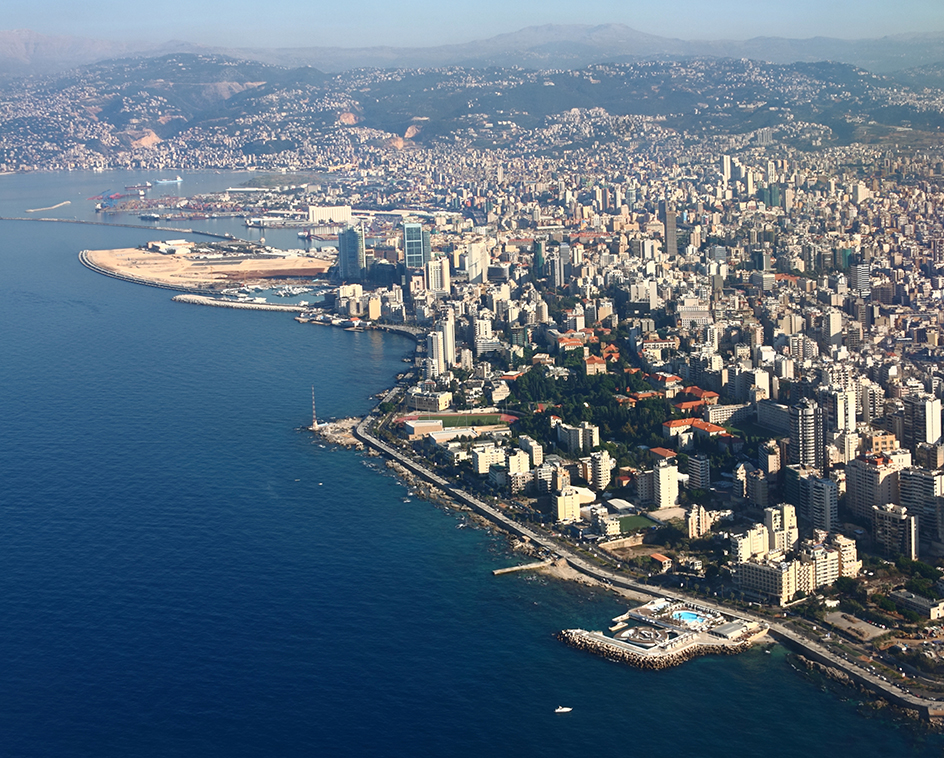
Agriculture.
Much of the Middle East is dry. But there is enough rain or snow for farming in Lebanon, northern Israel, the West Bank, northern Syria, northern Iraq, and parts of Turkey and Iran. In Yemen and Oman, monsoons (seasonal winds) bring enough rain for farming. In Egypt, canals carry Nile River water to the fields. In Iraq, the Tigris and Euphrates rivers provide water. Since the mid-1800’s, the extension of irrigation systems, the building of dams, and improved equipment have led to a large expansion of farmland. 
Wheat is the region’s chief grain crop. Farmers also grow barley, corn, and rice. Other important Middle East crops include apples, citrus fruits, cotton, dates, grapes, olives, potatoes, sugar beets, sugar cane, tomatoes, and watermelons. Yemen is known for its coffee, which is shipped from the port of Mocha.
Manufacturing.
The Middle East’s chief industries include oil refining, food processing, and the production of chemicals and fertilizers, construction materials, textiles, and weapons. Textile production has long been important. The names of some common types of cloth are derived from Middle Eastern place names. Muslin is named after Mosul, Iraq, and damask after Damascus, Syria. Today, Iran still produces fine carpets. Israel produces high-technology products and cut diamonds. Israel, Egypt, and Iran have important film and recording industries. Modern software industries have developed in Israel, Egypt, and the Persian Gulf countries. Israel is one of the world’s top 10 arms suppliers, and Iran and Egypt also have arms industries.


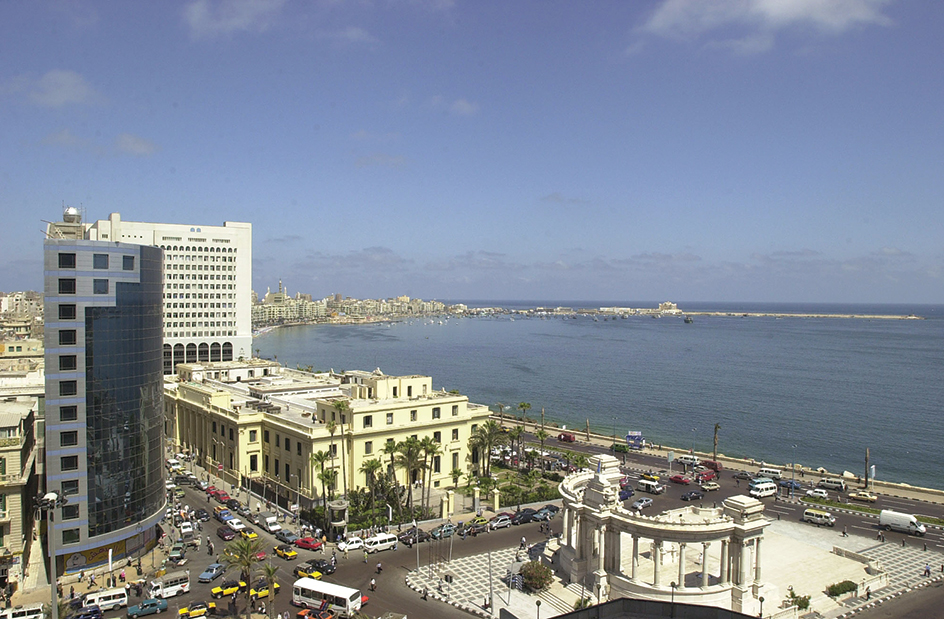
Mining.
The Middle East has almost two-thirds of the world’s oil reserves. Saudi Arabia alone has over one-fourth of the world’s reserves. Other major oil producers are Iran, Iraq, Kuwait, Oman, Qatar, and the United Arab Emirates. Other minerals mined in the Middle East include coal, iron ore, natural gas, and phosphates.
International trade.
The Middle East imports much of the wheat, flour, and meat it consumes. Other imports include machinery and consumer goods. The United States supplies much of the region’s weapons. The region’s most important export by far is oil, most of which is sent to Europe and Japan. Middle Eastern countries also export textiles, fruits, and vegetables. Many of the fruits and vegetables are sent to Europe, especially when it is winter there.
History
Early civilizations.
People lived in parts of the Middle East as early as 25,000 B.C. More than 10,000 years ago, the Middle East was the first place in the world to develop agriculture.
Between 3500 and 3100 B.C., the world’s earliest civilizations—Sumer and Egypt—arose in the region. Sumerian civilization developed on the fertile plain between the Tigris and Euphrates rivers in what is now Iraq (see Sumer ). Sumer was later absorbed by the Babylonian Empire. Egyptian civilization arose in the Nile Valley (see Egypt, Ancient ). About 1900 B.C., the Hittites came to power in what is now Turkey (see Hittites ). Other peoples, such as the Hebrews and the Phoenicians, also organized societies in the region. 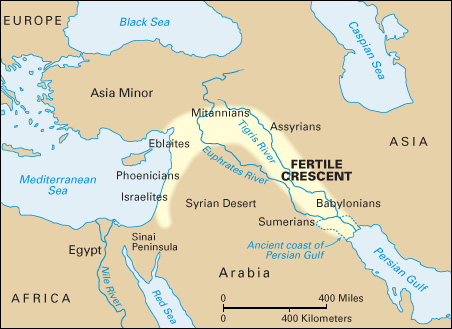
Ancient Middle Eastern peoples made key advances in the fields of mathematics, medicine, and astronomy. They also developed alphabetic writing.
Beginning in the 800’s B.C., a series of peoples invaded and conquered much territory in the Middle East. They included the Assyrians, from what is now northern Iraq; the Medes, from what is now northern Iran; and the Persians, from what are now Iran and Afghanistan. In 331 B.C., the Macedonian king Alexander the Great conquered the Middle East. During the next 300 years—a period called the Hellenistic Age—Greek culture dominated the region, and great achievements took place in scholarship, science, and the arts.
By 30 B.C., the Romans had conquered much of the Middle East. Jesus Christ lived under Roman rule. Christianity was the major religion of the Middle East until the A.D. 600’s.
The spread of Islam.
In about 610, in the Arabian city of Mecca, the Prophet Muhammad began to preach a new message proclaiming that there is only one God. In 622, Muhammad moved to the Arabian city of Medina, where he became the head of a religious and political community. Those who accepted his message were called Muslims.
Muhammad died in 632. The leaders who succeeded him were called caliphs, and the government of a caliph was called a caliphate. The first caliphs ruled from Medina. Disputes over who should serve as caliph led to splits among Muslims starting in the mid-600’s. The Sunnis and Shī`ites were the main divisions that emerged.
Arab Muslims conquered an area stretching from Central Asia to Morocco and Spain. Over time, many of the conquered peoples adopted Islam and the Arabic language. From the late 600’s to the early 900’s, the Islamic Empire flourished. The economy expanded, and science and scholarship flourished. From 661 to 750, the Umayyad caliphate ruled the Islamic Empire from Damascus, in Syria. In 750, the Abbasids overthrew the Umayyads and moved the caliphate to what is now Iraq. There, the Abbasids began building a new capital, Baghdad, in 762.
Abbasid power began to decline in the 800’s. By the mid-900’s, the Middle East had broken up into numerous small and medium-sized states. They often fought one another and were unable to hold back invaders.
Muslim Turks from Central Asia began to invade and migrate into the region after 1000. They took over Baghdad in 1055. By the end of the century, Turkish rulers controlled an area stretching from Afghanistan to Asia Minor (now Turkey), Syria, and Palestine. In 1096, European Christians invaded the Middle East in the first of several military expeditions called the Crusades (see Crusades). The crusaders established small states in the eastern Mediterranean region that lasted from 1099 to 1291. Mongols from Central Asia invaded in the 1200’s and again in the early 1400’s, bringing large parts of the Middle East under their control. Cultural achievements, especially in architecture and the arts, continued even in unsettled political times. Islamic mysticism, called Sufism, emerged and became popular during this period.
The Ottoman Empire.
In the 1300’s and 1400’s, a group of Turkish Muslims called the Ottomans began gaining control of Asia Minor and southeastern Europe. In the 1500’s, the Ottomans conquered most of the Arab lands of the Middle East. The Ottoman Empire was one of the world’s most powerful empires in the 1500’s and 1600’s. During this period, the Ottomans threatened to conquer central Europe, twice attacking Vienna, Austria. 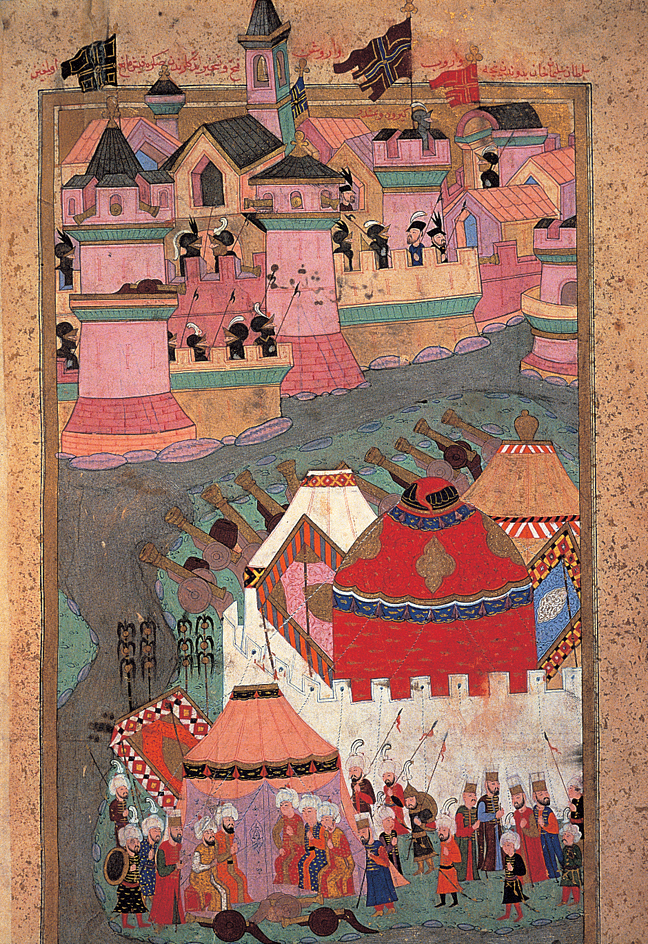
In the 1700’s, rapid industrial development in Europe began to give Europe an economic and technological advantage over the Ottoman Empire. In the 1800’s, European political, economic, and cultural dominance in the Middle East grew. To strengthen themselves, the Ottomans reorganized their military, political administration, and education system, based on Europe’s example. Nevertheless, during the 1800’s and early 1900’s, France, the United Kingdom, and Italy took control of Ottoman territories in North Africa, including Egypt. The British Navy gained control of the Persian Gulf region.
Struggles for independence.
In World War I (1914-1918), the Ottoman Empire was defeated. Most Ottoman territories were divided among the victorious Allies. France took control of Lebanon and Syria. The United Kingdom tightened its hold on Egypt and gained control of Iraq, Palestine, and Transjordan (now Jordan). The British also controlled Kuwait, Bahrain, the Trucial States (now the United Arab Emirates), Oman, and the Aden Protectorate (now part of Yemen).
The Turks fought successfully for independence, establishing the Republic of Turkey in 1923. By the mid-1920’s, the only other fully independent countries in the region were Iran, Yemen, and the lands controlled by Ibn Saud in Arabia. In 1932, the Saudi lands were united as the Kingdom of Saudi Arabia.
Uprisings against colonial rule occurred in Egypt (1919), Iraq (1920), and Syria (1925-1927). In 1922, the British granted partial independence to Egypt but kept control over military and foreign affairs and the Suez Canal. Iraq became formally independent in 1932, but the British maintained a strong presence there. Arab struggles for independence continued until after World War II (1939-1945). Lebanon became independent in 1943, and Syria and Transjordan in 1946.
The long colonial presence in the Middle East encouraged the rise of nationalism and Islamism. Nationalism is a people’s sense of unity as a nation, based on a shared language, religion, or history. It often includes a desire for a nation-state—that is, a national homeland with an independent government. The goal of Islamism is to install Islamic values in all areas of life and create an Islamic government. An important Islamist organization called the Muslim Brotherhood was founded in Egypt in 1928.
The Palestine conflict.
In Palestine, Jewish nationalism, called Zionism, collided with Palestinian Arab nationalism throughout the 1900’s. Both Zionists and Palestinian Arab nationalists claimed Palestine as their homeland. Zionists wanted a state for the Jews, where they would be safe from persecution. The Zionists were European Jews. But because of the Jews’ historical and religious attachment to Palestine—which they called Israel—the Zionists identified it as their homeland. Palestinian Arabs wanted Palestine to be an Arab state, independent from the United Kingdom, and they feared Zionist ambitions.
Jewish immigration to Palestine began in the late 1800’s. It increased in the 1930’s because of Nazi persecution in Germany. From 1936 to 1939, Palestinian Arabs rose in revolt against the British and the Zionists, but British forces crushed the revolt. The British, who had favored Jewish immigration up to that point, began to limit it. After World War II, Jews—who by then were about one-third of Palestine’s people—launched a revolt of their own against the British and the Arabs.
In 1947, the United Nations (UN) voted to divide Palestine into a Jewish state and an Arab state. Jewish leaders accepted the plan. Palestinian Arab leaders opposed it. Under the plan, more than half of Palestine’s territory was to be placed in the Jewish state. Jewish-Arab fighting intensified. In March and April 1948, Jewish forces seized areas allotted to both the Jewish state and the Arab state. Palestinian Arab civilians began to flee the fighting, and others were driven from their homes. On May 14, 1948, the Jewish state of Israel was proclaimed. The next day, armies from Egypt, Iraq, Jordan, Lebanon, and Syria invaded Israel. Over the next several months, Israeli forces defeated the Arab armies. 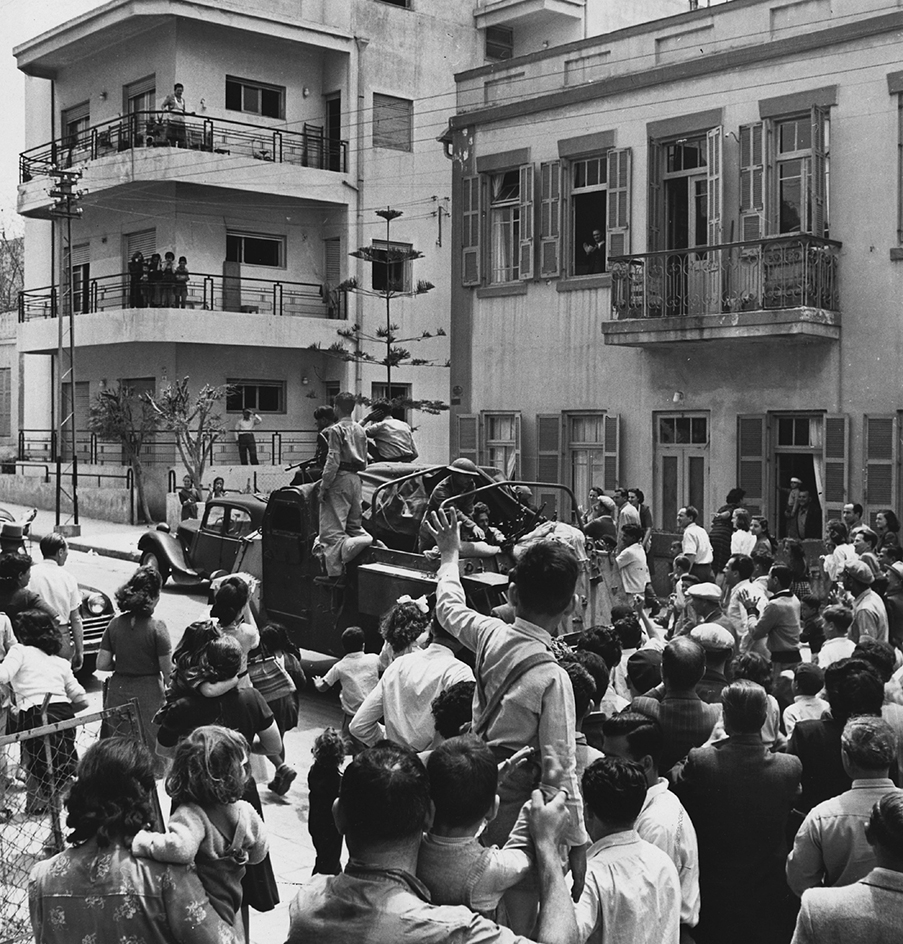
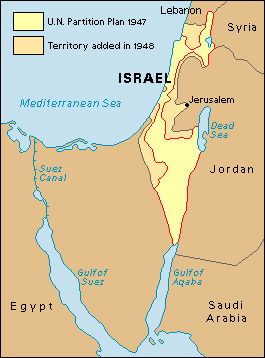
When the war ended in 1949, Israel held more territory than the UN plan had given it. Jordan controlled what became known as the West Bank. Egypt controlled the Gaza Strip in southwestern Palestine. More than 700,000 Palestinian Arabs had become refugees in the Arab lands surrounding Israel, and Israel refused to let them return. Israelis refer to this war as the War of Independence. Palestinian Arabs—usually called simply Palestinians—refer to it as al-nakba (the disaster in Arabic).
After 1949, negotiations for a full peace stumbled on three issues: (1) Israel’s borders, (2) the refugees’ right to return or to receive payment, and (3) recognition (formal acceptance) of Israel by Arab countries. By the early 2000’s, these issues were still not resolved.
Cold War alliances.
The Cold War—the intense rivalry between Communist nations, led by the Soviet Union, and non-Communist nations, led by the United States—played a large role in Middle East affairs. The Cold War lasted from the mid-1940’s to the early 1990’s, when the Soviet Union was dissolved.
In the 1950’s and 1960’s, military officers seized power in Egypt, Iraq, and Syria. These military leaders were Arab nationalists—that is, they called for political unification of the Arab world. They opposed European and American influence in the region. They also advocated socialism—that is, government control of the production and distribution of goods—and sided with the Soviets in the Cold War. In spite of the similarities between Egypt, Iraq, and Syria, they were often bitter rivals.
The most influential of the military leaders was Gamal Abdel Nasser of Egypt. In 1952, he overthrew King Faruk of Egypt. In 1956, Nasser took over the Suez Canal from its British and French owners. In response, Israel, the United Kingdom, and France attacked Egypt. But pressure from the United States and the Soviet Union forced the invaders to withdraw. Nasser emerged from the Suez crisis as a hero in the Arab world.
The monarchies of Saudi Arabia, Kuwait, and Jordan sided with the United States in the Cold War. In the 1950’s, Turkey embraced democratic politics and joined the North Atlantic Treaty Organization, a military alliance of the United States, Canada, and many European nations. In 1953, the United States and the United Kingdom backed the overthrow of Iran’s parliamentary government. The shah (king), Mohammed Reza Pahlavi, was restored to power and became a firm U.S. ally.
The Cold War also affected the Arab-Israeli conflict. Israel and the United States grew closer in the 1960’s, while Egypt, Syria, and Iraq received weapons from the Soviet Union. In May 1967, Nasser moved Egyptian troops into the Sinai Peninsula to deter a suspected Israeli attack on Syria. Nasser also closed the Straits of Tiran, the entrance to the Israeli port of Elat. These moves provoked an Israeli attack on June 5. In six days, Israel seized the Sinai and Gaza Strip from Egypt, the Golan Heights from Syria, and the West Bank, including East Jerusalem, from Jordan. Israelis call the 1967 war the Six-Day War. Arabs call it the June War. 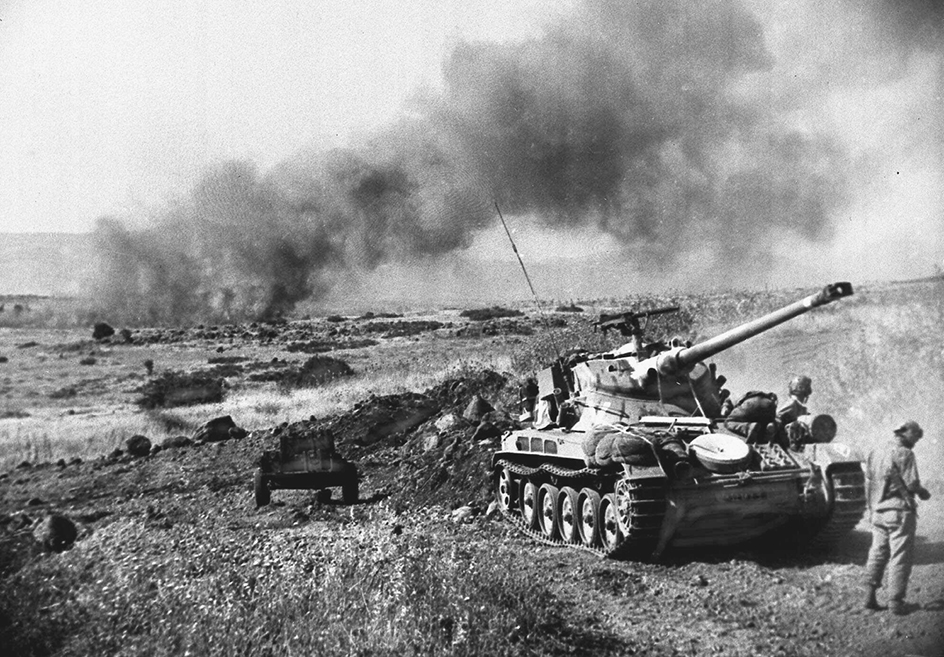
In the 1960’s, Palestinians renewed their efforts to establish a state. The most important Palestinian nationalist leader was Yasir Arafat, whose organization, Fatah, launched guerrilla attacks on Israel starting in 1966. Most Palestinian guerrillas were young men from refugee camps in the West Bank, the Gaza Strip, Syria, and Lebanon. In 1969, Arafat became head of the Palestine Liberation Organization (PLO), which represented several guerrilla and civilian groups. The guerrilla attacks often targeted Israeli civilians, and Arab civilians often became victims of Israeli counterattacks.
The 1970’s and 1980’s.
Starting in the 1970’s, the United States took a more active role in the Middle East. It became Israel’s main ally and arms supplier, and it replaced the United Kingdom as the main power in the Persian Gulf.
In October 1973, Egypt and Syria attacked Israeli positions in the Golan Heights and the Sinai Peninsula, aiming to recapture these territories. Israel, with U.S. support, eventually drove them back. In response, the Arab oil-producing states declared an embargo of oil sales to the United States. The Organization of Petroleum Exporting Countries (OPEC) also sharply raised the price of oil. Israelis call this war the Yom Kippur War. Arabs call it the October War or the Ramadan War.
After the war and the “oil price shock” of 1973, the price of oil remained high. The higher prices brought new wealth to Iran and other Arab oil producers. The prices also led to new exploration and conservation efforts in Western countries.
After the war, Egyptian President Anwar el-Sadat abandoned the Soviet Union and Nasser’s socialist policies. Egypt became a U.S. ally. In 1978, Sadat and Israeli Prime Minister Menachem Begin met for talks in the United States at Camp David, Maryland. The resulting Camp David Accords led to an Egyptian-Israeli peace treaty in 1979. Under its terms, Israel returned the Sinai Peninsula to Egypt.
In 1975, a civil war erupted between Lebanon’s Christians and Muslims. The Muslims allied with PLO forces based in Lebanon. In 1976, Syrian troops entered northern and eastern Lebanon to prevent a Muslim-PLO victory and deter an Israeli intervention. But Israel invaded in 1978 and 1982 to defeat the PLO. In 1982, Israel drove the PLO out of Lebanon. Israel, backed by the United States, hoped to dominate Lebanon politically. But Syria and its local allies, particularly a new Shī`ah Islamist organization called Hezbollah, opposed this effort. Lebanon’s civil war ended in 1990. However, Syrian forces remained in parts of the country, and Israel continued to occupy a “security zone” in south Lebanon. Hezbollah fighters clashed with the Israelis and the Israeli-backed South Lebanon Army until Israeli troops withdrew in 2000. Syrian troops remained until 2005.
In 1979, a revolution in Iran overthrew the shah. The Shī`ah leader Ayatollah Ruhollah Khomeini and his followers took control, establishing an Islamic republic with a clergyman as the highest authority. The new government was hostile to the United States because of American support for the shah. A group of American embassy workers were held hostage by Iranian revolutionaries from November 1979 to January 1981
In 1979, Soviet forces invaded Afghanistan to support the Communist government there. From 1979 to 1989, thousands of young Muslims, mainly Arabs from the Middle East, volunteered to fight the Soviets in Afghanistan. They were called mujahideen, an Arabic term meaning warriors for the faith. They saw themselves as defending Islam against aggression. The United States, Saudi Arabia, and Pakistan supported them. After the war, some mujahideen, including the Saudi-born Osama bin Laden, began directing their tactics against the United States and its allies.
In 1980, Iraqi President Saddam Hussein invaded Iran over boundary disputes and other disagreements. The United States assisted Iraq out of fear of the consequences of an Iranian victory. Attacks by the U.S. Navy on Iranian targets helped force Iran to accept a cease-fire in 1988.
Because of events in Iran, Iraq, and Afghanistan, the United States built up its forces in the Persian Gulf, constructing a naval base on the Indian Ocean island of Diego Garcia and new military and air bases in Saudi Arabia.
At the end of 1987, a Palestinian uprising began in the Gaza Strip and the West Bank against the Israeli occupation. The uprising, known as the intifada (an Arabic term meaning shaking off), lasted until 1993. During the intifada, an Islamist organization called Hamas emerged. It hoped to replace the PLO as the leader of the Palestinian resistance movement. In 1988, the PLO declared a state in the West Bank and the Gaza Strip, recognized Israel, and renounced terrorism.
The 1990’s.
In August 1990, Iraq invaded and occupied Kuwait. United States President George H. W. Bush assembled a coalition of 39 nations—including many Arab countries—to protect Saudi Arabia and liberate Kuwait. In early 1991, the U.S.-led coalition defeated Iraq and forced Iraqi troops to leave Kuwait.
The UN imposed sanctions on Iraq to force Saddam Hussein to give up all weapons of mass destruction—that is, chemical, biological, or nuclear weapons. “No-fly” zones were established to protect Iraqi Kurds and Shī`ites who opposed Hussein’s government. Despite these actions, Iraqi Kurds and Shī`ites continued to suffer, while the UN sanctions deprived many Iraqis of food and medicine.
In 1993, Israeli and PLO leaders met for talks in Oslo, Norway, beginning what became known as the Oslo peace process. Under the Oslo agreements, the two sides recognized each other. In 1994, Israel withdrew from some areas in the West Bank and Gaza Strip, and the Palestinian Authority (PA) took control of them. Israel and Jordan signed a peace treaty that same year. 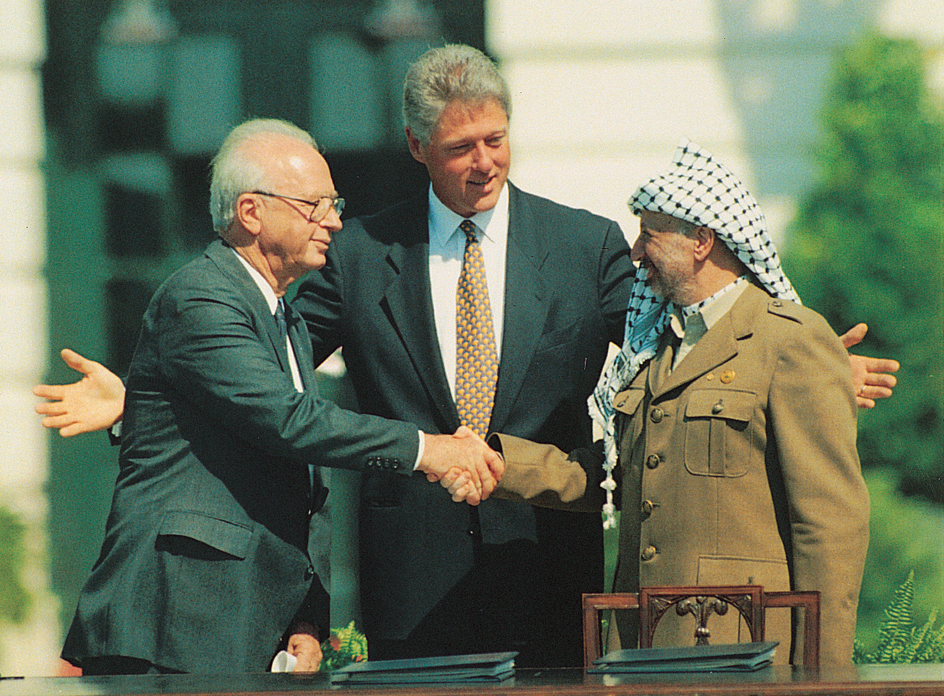
The Oslo process failed to achieve peace, however. Both sides were internally divided. Israel’s Labor Party supported the Oslo process, but the Likud party and others opposed it. Arafat and Fatah supported it, but Hamas opposed it. Also, tensions increased as Israel continued to expand Jewish settlements in the West Bank and the Gaza Strip.
The 2000’s.
In September 2000, a new Palestinian intifada began. Hamas and other groups carried out suicide bombings in Israel, and Israel retaliated. In 2002, Israel reoccupied most of the Palestinian areas from which it had withdrawn earlier. Arafat died in late 2004, and Mahmoud Abbas replaced him. In late 2005, Israel removed its troops and settlers from the Gaza Strip, but it kept control of Gaza’s borders, coastline, and airspace. Also, Jewish settlements in the West Bank continued to grow.
In January 2006, Hamas won the Palestinian Legislative Council elections. Because Hamas does not recognize Israel’s right to exist, Israel, the United States, and European nations refused to deal with the group. In June 2007, fighting broke out in Gaza between Hamas and Fatah. Hamas seized control of the Gaza Strip, and Fatah took control of the West Bank. Violence between Palestinians and Israeli forces in Gaza—most notably in 2008, 2009, and 2012—killed hundreds of people, most of them Palestinian. 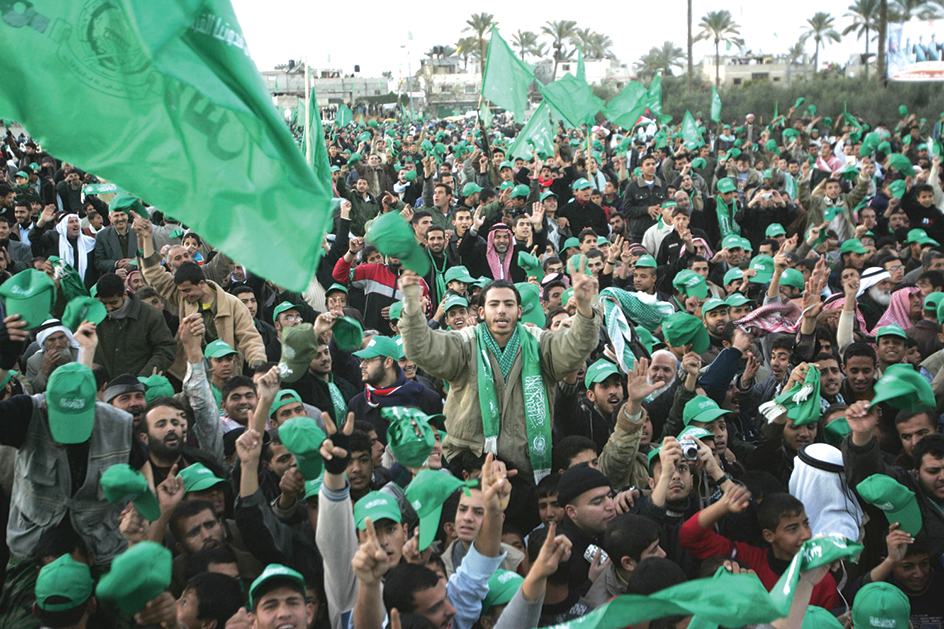
Conflict reignited in Lebanon in July 2006. Hezbollah captured two Israeli soldiers, provoking Israel into a month-long war. Israel bombed Lebanon, and Hezbollah fired thousands of rockets into Israel. Afterward, Lebanon’s government was stalemated between Hezbollah supporters and opponents.
The Sept. 11, 2001, terrorist attacks drew the United States further into Middle East affairs. Osama bin Laden’s organization, al-Qa`ida, was responsible for the attacks. Al-Qa`ida, which considers the United States an enemy of Islam, opposed the presence of U.S. troops in Saudi Arabia following the Gulf War of 1991. The United States responded to the attacks by declaring a “war on terrorism.” In late 2001, U.S. forces and local rebels overthrew Afghanistan’s ruling group, the Taliban, which had been harboring bin Laden and other Qa`ida leaders. Since then, many Qa`ida leaders—including bin Laden in 2011—have been killed. 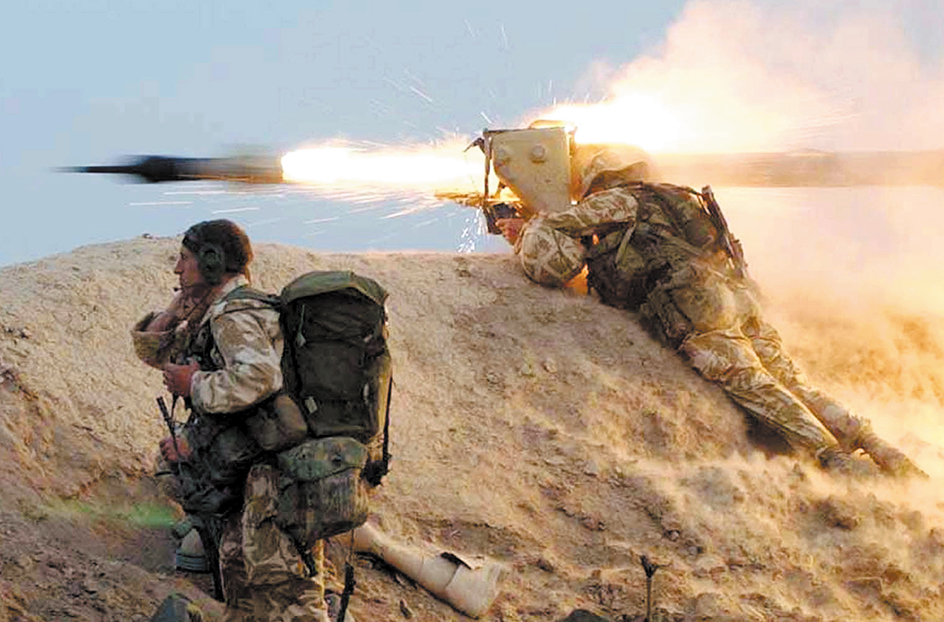
In March 2003, U.S. President George W. Bush launched a war against Iraq. He linked this action to the war on terrorism and said the intent was to disarm Iraq of weapons of mass destruction. By mid-April, U.S.-led forces had toppled Saddam Hussein’s government. United States and allied forces began working to rebuild Iraq—a task made difficult by numerous guerrilla attacks against them and against civilian targets. No weapons of mass destruction were found in Iraq. In 2008, after Iraq adopted a constitution and held elections, violence began to decline. The United States formally ended its combat operations in 2010, but some U.S. troops remained in Iraq until late 2011.
In 2002, the Islamist Justice and Development Party won elections in Turkey. The new government passed political and economic reforms in hopes of becoming the only Middle Eastern country to join the European Union (EU). These reforms included the abolishment of capital punishment, the revision of other criminal penalties, the expansion of civil rights for Kurds and women, and the reduction of the military’s role in politics. Disagreements over Cyprus stalled Turkey’s membership drive in 2007, but negotiations continued.
In 2006, concerns over Iran’s uranium enrichment led the UN Security Council to ban Iran from trading nuclear-related materials. In 2007, the Council imposed additional sanctions on Iran. Later that year, the United States increased its sanctions against Iran, renewing charges that the country was supporting terrorism.
In 2009, Mahmoud Ahmadinejad was reelected president of Iran, causing widespread protests over alleged electoral fraud. The government suppressed the protests by force.
Recent developments.
In early 2011, antigovernment protests erupted in several Middle Eastern countries, as well as in other Arab states in North Africa. Clashes between protesters and government forces resulted in thousands of deaths throughout the region. The protests and resulting political unrest were often referred to as the “Arab Spring.” Protests in Tunisia led to the resignation of President Zine El-Abidine Ben Ali in January. Egyptian President Hosni Mubarak resigned in February after weeks of protests in Cairo. The Bahraini government cracked down on protests there with the aid of troops from Saudi Arabia. After months of protests and occasional fighting in Yemen, then-President Ali Abdullah Salih was wounded in a June attack on the presidential compound.
In Libya, protests led to an armed rebellion against Mu’ammar al-Qadhafi. First the United Nations (UN) and then the North Atlantic Treaty Organization (NATO) carried out military operations aimed at protecting civilians. By August, rebel forces controlled most of the country, including Tripoli, Libya’s capital. Qadhafi fled the city and went into hiding. A transitional council took control of the government. In October, Qadhafi was killed in his hometown of Surt (also spelled Sirte).
In Syria, protests in 2011 led to an armed rebellion against the government of President Bashar al-Assad. A bitter civil war continued in the years that followed, killing an estimated 600,000 people by 2023.
In September 2012, terrorists attacked the U.S. consulate in Libya, killing the U.S. ambassador and three other Americans. The attack coincided with protests throughout the Middle East and elsewhere over an anti-Islam video produced in the United States.
In 2013, after mass protests and antigovernment demonstrations, the Egyptian army forced President Mohamed Morsi from office. In the following weeks, increasing violence between Morsi supporters and security forces killed hundreds of people. In 2014, former army commander in chief Abdel Fattah el-Sisi became Egypt’s new president.
Also in 2014, a combined Hamas and Fatah Palestinian government was formed. However, Israeli soldiers entered Gaza after a sharp increase in cross-border violence. Over several weeks, more than 2,000 Palestinians were killed, as were dozens of Israelis.
The Islamic State, a radical militant Islamic group sometimes known by the initials ISIS or ISIL, emerged as a major force in Iraq and Syria in 2014. In September, a Shī`ite Muslim rebel group known as the Houthis took control of Yemen’s capital, Sanaa. They forced Yemeni President Abd-Rabbu Mansour Hadi to flee Yemen in February 2015. Yemen then fell into chaos with rival factions fighting for power. In July, Iran agreed to a deal with the United States and five other nations to limit Iran’s nuclear program. In return, remaining economic sanctions on Iran were lifted in January 2016.
In 2017, the war in Syria continued with increasing intervention from such foreign powers as Russia and the United States. Foreign intervention also increased in Iraq to combat Islamic State militants. Yemen’s civil war continued, and random violent clashes occurred in Turkey between Kurdish militants and government forces. In 2018, the United States withdrew from the agreement to limit Iran’s nuclear program.
In 2021, the wars in Syria and Yemen continued. Islamic State violence lessened in Iraq. The United States and NATO began withdrawing their troops from Afghanistan in order to end the Afghanistan War begun in 2001. The Taliban soon gained control over most of the country, including the capital, Kabul. The Afghan army, which had been trained by U.S. and NATO forces, proved unable to stop the Taliban’s advance. United States troops and their allies evacuated thousands of foreign and Afghan civilians from Afghanistan. The United States finished withdrawing its troops on Aug. 30, 2021, thus ending the war.
The warring parties in Yemen’s civil conflict agreed to a truce in 2022. Peace talks began in 2023.
The Arab-Israeli conflict continued in the 2020’s. In 2021, violence erupted as Israeli police attempted to evict Palestinian families from East Jerusalem . Hamas responded by launching air strikes into Israel, and Israel fired air strikes into Gaza in return. Hundreds of people were killed before a cease-fire agreement was reached in May 2021.
In October 2023, Hamas launched a large-scale surprise attack against Israel from the Gaza Strip. The group not only fired rockets into Israel, but also broke through a barrier around Gaza and invaded Israel by land, killing about 1,200 people and taking more than 200 hostages. In response, Israel declared war for the first time since the Yom Kippur War in 1973. The country launched counterattacks against the invading Hamas militants and against many targets in Gaza. Thousands of people died in the conflict and thousands more were wounded, including many civilians on both sides.
